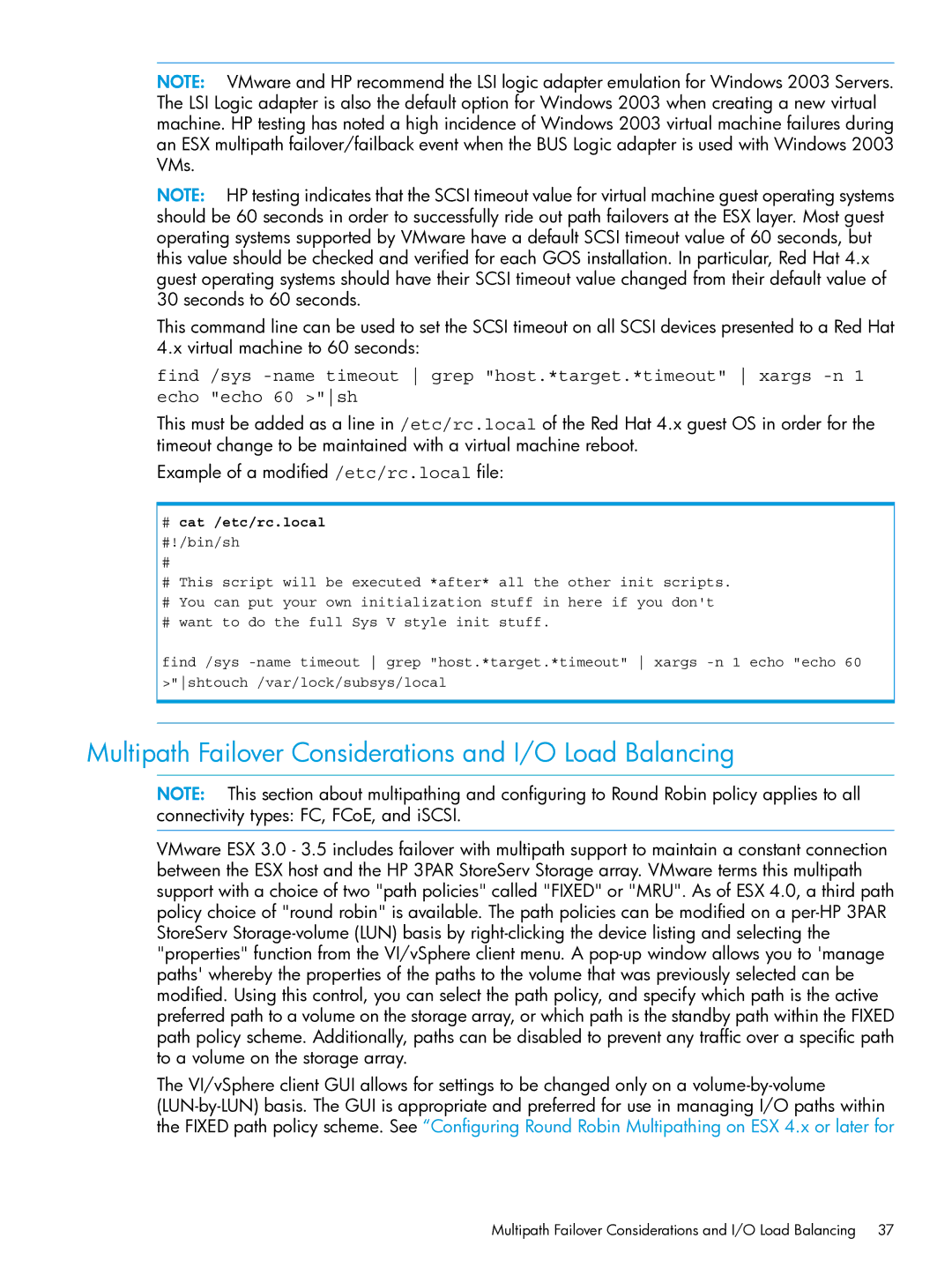
NOTE: VMware and HP recommend the LSI logic adapter emulation for Windows 2003 Servers. The LSI Logic adapter is also the default option for Windows 2003 when creating a new virtual machine. HP testing has noted a high incidence of Windows 2003 virtual machine failures during an ESX multipath failover/failback event when the BUS Logic adapter is used with Windows 2003 VMs.
NOTE: HP testing indicates that the SCSI timeout value for virtual machine guest operating systems should be 60 seconds in order to successfully ride out path failovers at the ESX layer. Most guest operating systems supported by VMware have a default SCSI timeout value of 60 seconds, but this value should be checked and verified for each GOS installation. In particular, Red Hat 4.x guest operating systems should have their SCSI timeout value changed from their default value of 30 seconds to 60 seconds.
This command line can be used to set the SCSI timeout on all SCSI devices presented to a Red Hat
4.x virtual machine to 60 seconds:
find /sys
This must be added as a line in /etc/rc.local of the Red Hat 4.x guest OS in order for the timeout change to be maintained with a virtual machine reboot.
Example of a modified /etc/rc.local file:
#cat /etc/rc.local
#!/bin/sh
#
#This script will be executed *after* all the other init scripts.
#You can put your own initialization stuff in here if you don't
#want to do the full Sys V style init stuff.
find /sys
Multipath Failover Considerations and I/O Load Balancing
NOTE: This section about multipathing and configuring to Round Robin policy applies to all
connectivity types: FC, FCoE, and iSCSI.
VMware ESX 3.0 - 3.5 includes failover with multipath support to maintain a constant connection between the ESX host and the HP 3PAR StoreServ Storage array. VMware terms this multipath support with a choice of two "path policies" called "FIXED" or "MRU". As of ESX 4.0, a third path policy choice of "round robin" is available. The path policies can be modified on a
The VI/vSphere client GUI allows for settings to be changed only on a
Multipath Failover Considerations and I/O Load Balancing 37
